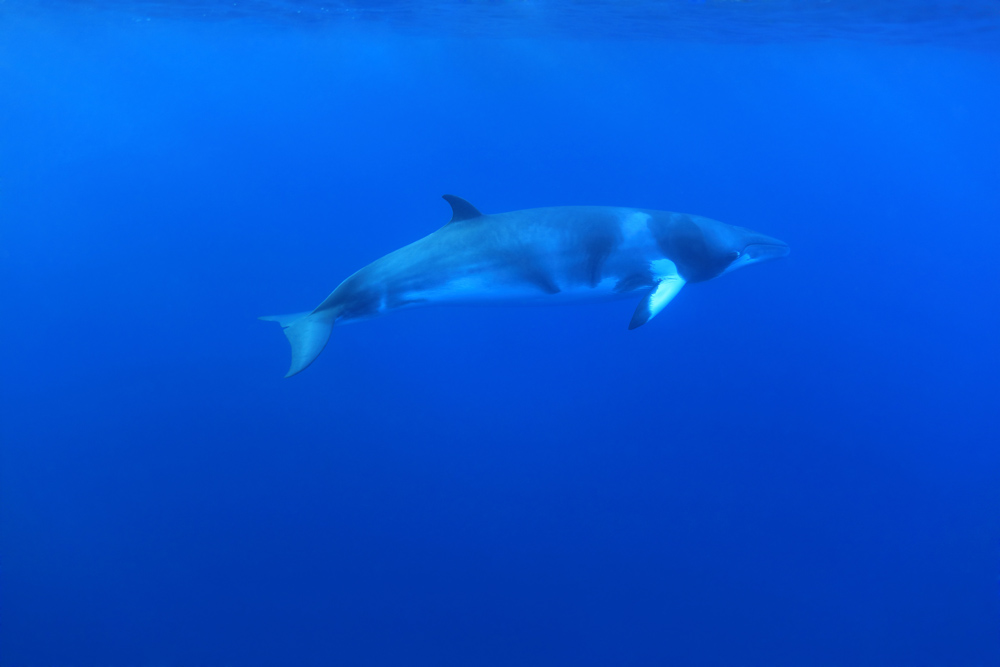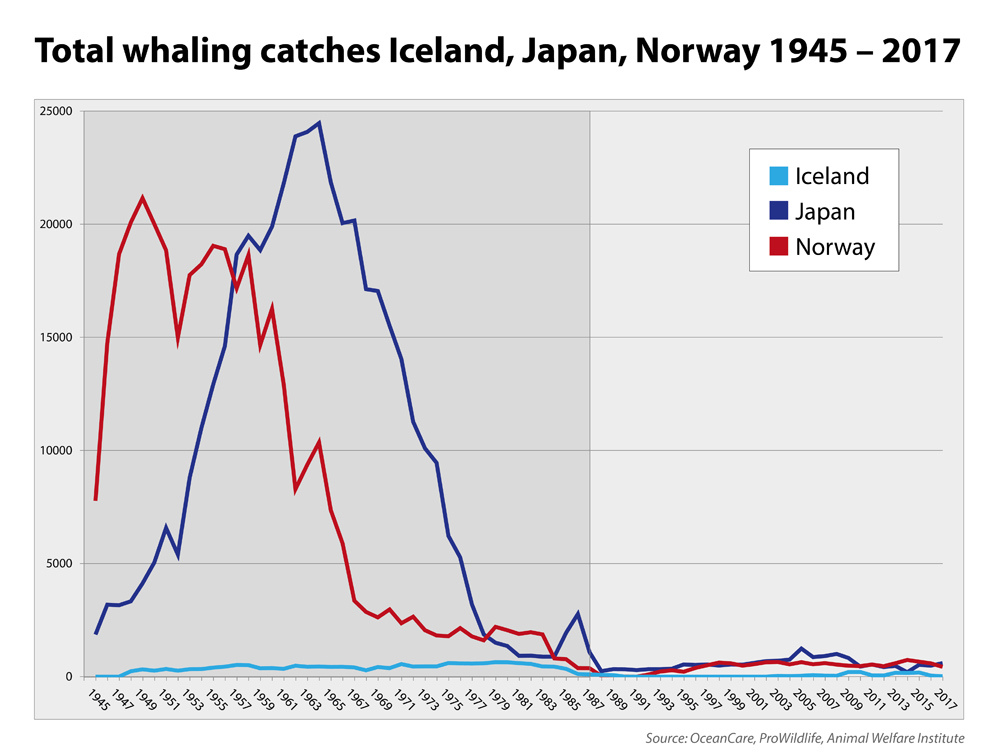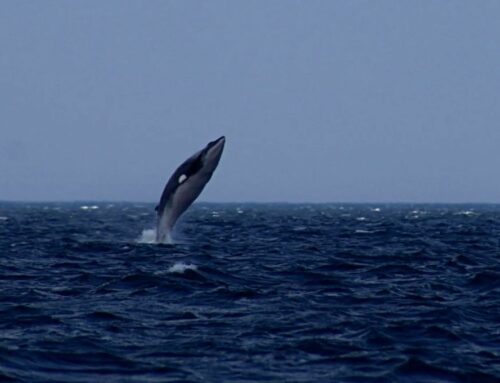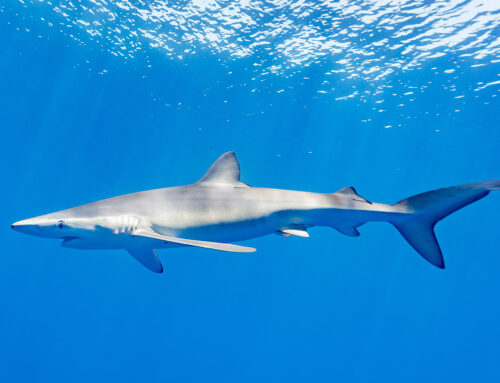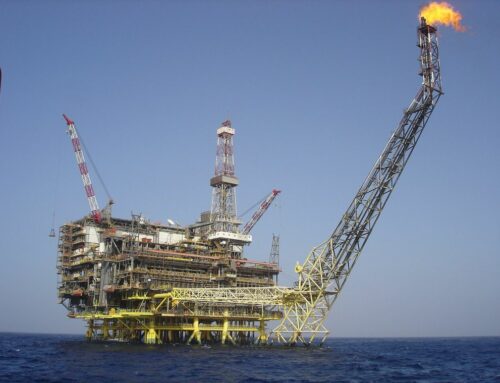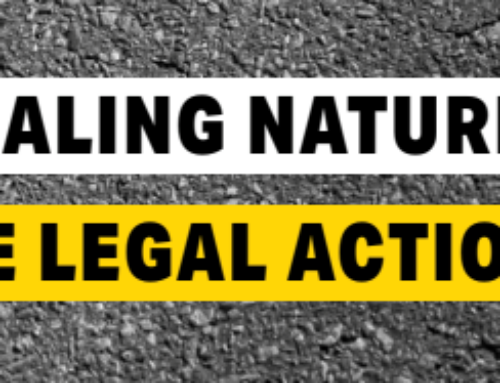As of 1 July, the Japanese government gives the green light for the resumption of commercial whaling, thereby breaking several taboos.
The island state, who withdraws from the International Whaling Commission (IWC) effective by end of June after 68 years of membership, opposes the moratorium on commercial whaling, an internationally agreed and effective ban. It thus becomes the first state to kill baleen whales for commercial reasons outside the international body responsible for the regulation of whaling. In contrast to the two European countries Iceland and Norway, who also grant themselves commercial whaling quotas based on reservations against the moratorium, earning them equally sharp criticism by conservationists, Japan is now completely leaving the international stage of cooperation. The marine conservation organisation OceanCare calls on the international community not to tacitly accept Japan’s unilateralism and to push for a fundamental reorientation of the IWC.
“Japan harpoons whales and the Whaling Commission at the same time,” says Nicolas Entrup, Senior Ocean Policy Expert with OceanCare, worrying about the consequences of Japan’s unilateral action. “Now we will see, what significance the international community attaches to cetacean conservation. We expect the G20 summit starting this week in Osaka, Japan, to send a first clear signal.”
The moratorium is among the most important achievements in international species conservation. While on average more than 30,000 large whales were killed every year before the moratorium, this number fell to presently (still) 1500. OceanCare is further worried that all three whaling nations – Iceland, Norway, Japan – also disregard the international ban on trade in whale products. “This erodes and undermines international cooperation for the protection of endangered species,” criticises Fabienne McLellan, Head of International Relations at OceanCare.
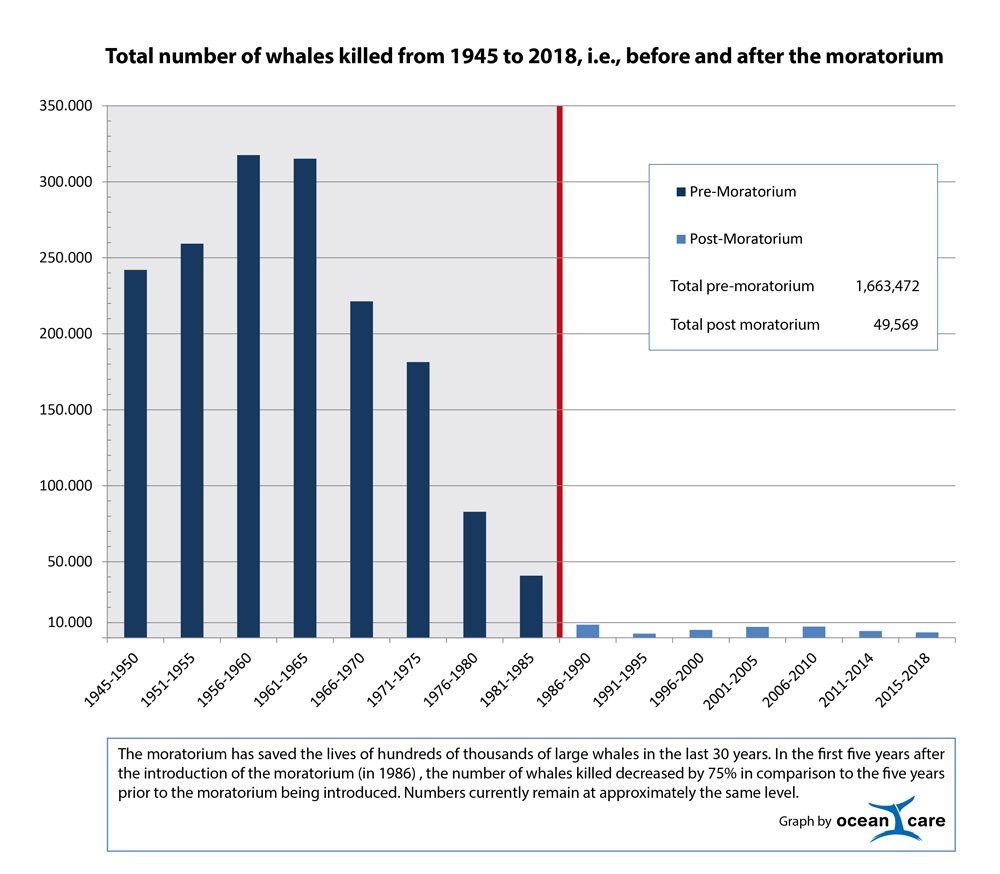
Number of whales killed 1945-2017. The numbers of whales killed before and after the moratorium shows the significant impact of the ban on commercial whaling.
OceanCare calls on IWC member states to work towards a thorough reorientation of the International Whaling Commission, permanently ruling out all forms of whaling except aboriginal subsistence whaling. The reorientation further shall turn the IWC into a body dealing with all the cumulative threats cetaceans are facing today. The Commission should also be strengthened by an enforcement body which monitors implementation of decisions and is entitled to impose sanctions in the case of non-implementation.
“The outcome of international decisions stands and falls with their implementation. This is true for all species conservation agreements. If Japan’s withdrawal from the IWC goes without consequences, international species conservation will lose its credibility. That’s too high a price,” says Entrup.
Facts and figures:
- Japan will target baleen whales such as minke, sei and bryde whales. Hunting will take place in coastal waters and in Japan’s exclusive economic zone (EEZ, 200 miles).
- Hunting will be permitted throughout the year until quotas are reached.
- After leaving the IWC, whalers will no longer be subject to the hunting ban on certain species. Also other species will be targeted by whalers, such as pilot whales and toothed whales such as Baird beaked whales. It is not yet known how many whales Japan will kill in the future.
- Since the commercial whaling ban came into force in 1986, Japan killed more than 17,000 whales for ‘scientific purposes’.
- This ‘scientific’ whaling (special permit whaling) has yielded hardly any papers published in peer-reviewed journals.
- In 2014, even the International Court of Justice in The Hague condemned Japan’s whaling in the Antarctic for lack of scientific basis and demanded that Japan discontinues this programme.
- Japan continues to import thousands of tons of whale meat from Iceland and Norway. The three countries have each submitted a reservation to the Convention on International Trade in Endangered Species of Wild Fauna and Flora (CITES) and are thus not formally bound by the trade ban. For years the whaling nations have been striving to lift the trade ban as well as the whaling moratorium. If this unregulated trade continues to increase, the effectiveness of CITES will be massively impaired.
- Japan’s commercial whaling desires are not matched by demand for whale meat in Japan or elsewhere in the world.



